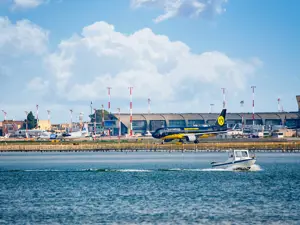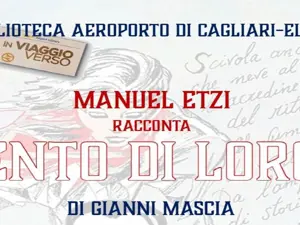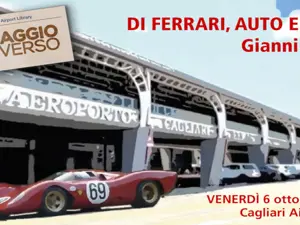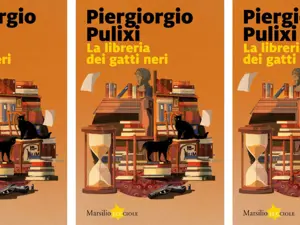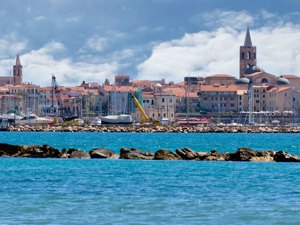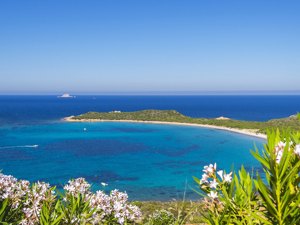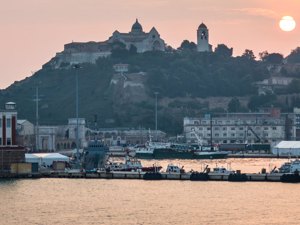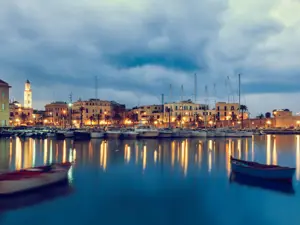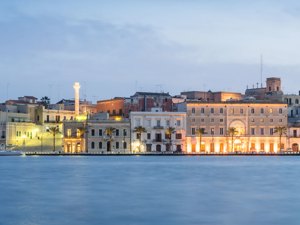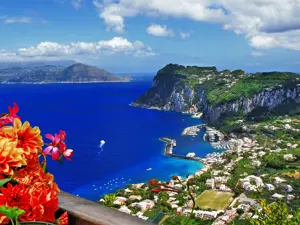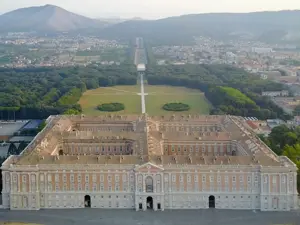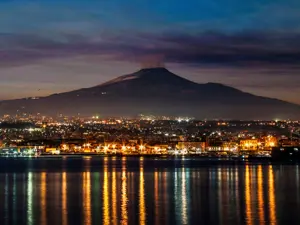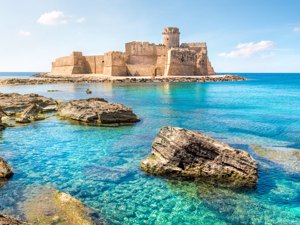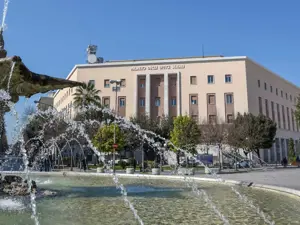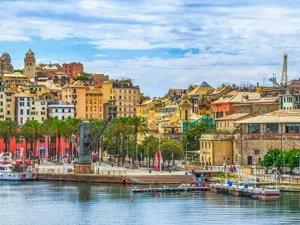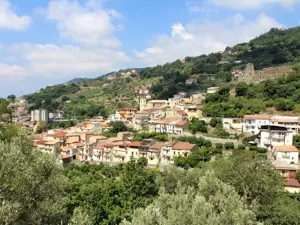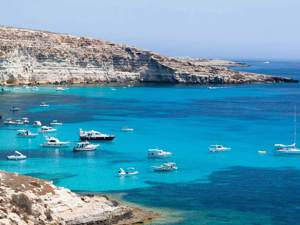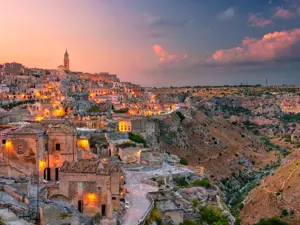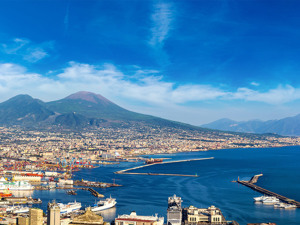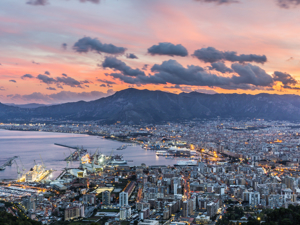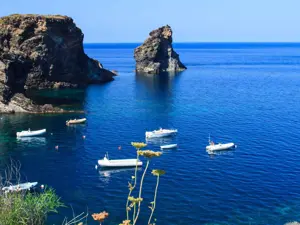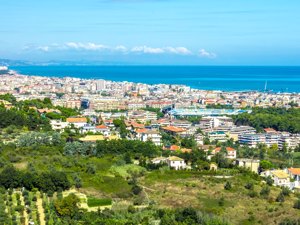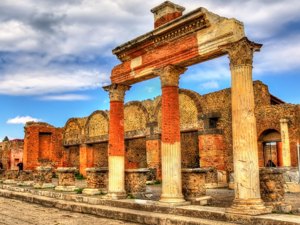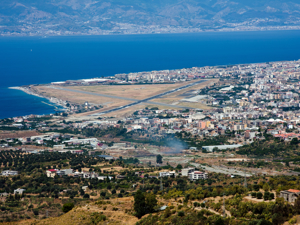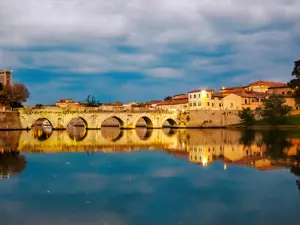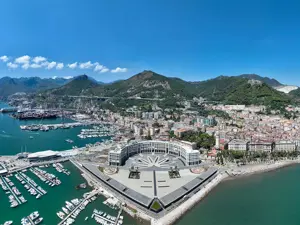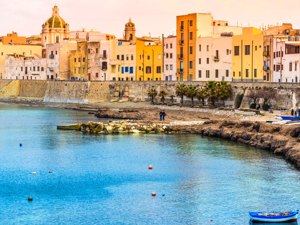A city made of historic districts to be discovered
The age-old history of Cagliari is clearly perceived on a stroll through the streets of the city, which was founded in the Neolithic period when it was constructed by Phoenician-Punic rulers.
The city is divided into different districts, each with specific features: the Marina district, inhabited by traders and fishermen, the Castello district, home to Medieval relics, the Stampace district, positioned below the castle walls and once the home of artists and craftsmen, and the Villanova district, where farmers who emigrated from the nearby Campidano plain became established. Cagliari seen from the sea, offers an impressive scenic skyline which houses ancient neighborhoods.
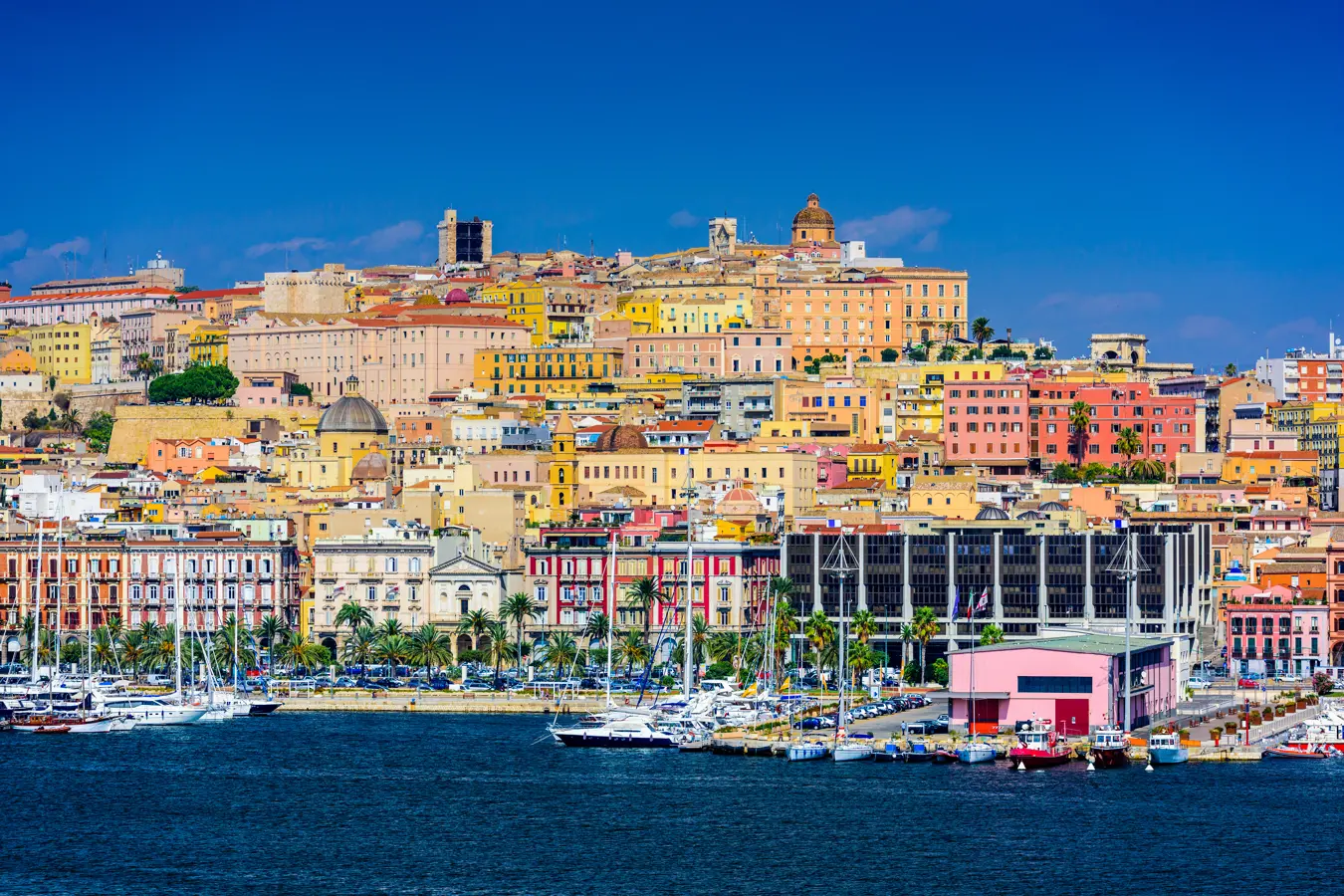
Cagliari. Photo: Sisterscom.com, Shutterstock
The district Villanova in Cagliari
One of the most important districts of Cagliari is Villanova. Here religion, ancient history, archaeology and culture come together in a place where farmers from the nearby plain of Campidano settled at the end of the XIII century so that they could follow trading of their products more easily. Villanova however has always been perceived as district in itself, almost a unique village attached to the city.
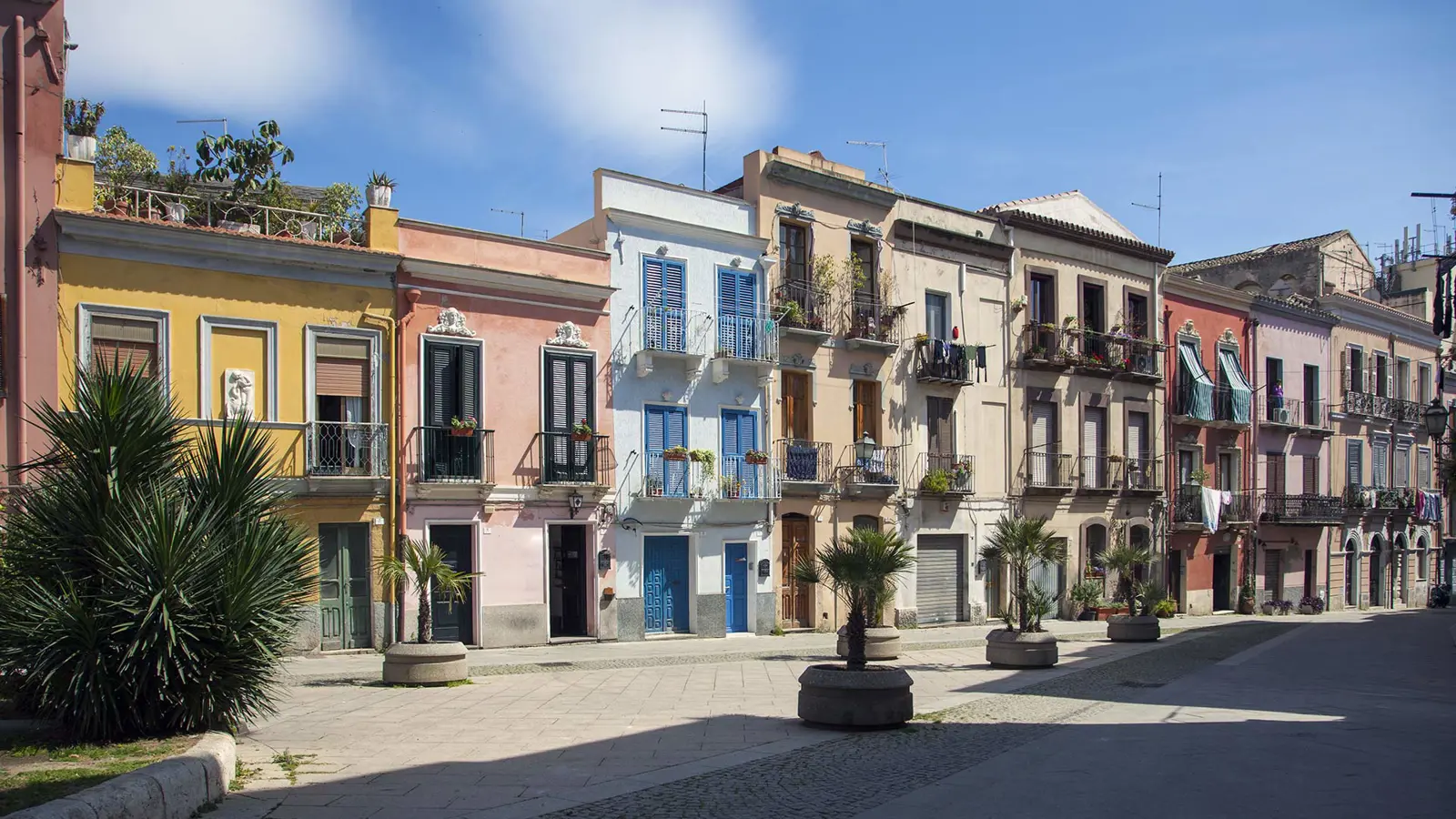
Cagliari. Photo: Sisterscom.com, Shutterstock
The historic part of the district, which in past times was enclosed by a town wall, extends along several parallel streets: Via San Giovanni, the most important, Via Piccioni, Via San Giacomo and Via San Domenico, which are all connected to one another by picturesque alleyways. The simple houses of only one or two floors, with craft workshops and shops on the ground floor, are a distinctive feature of Villanova.
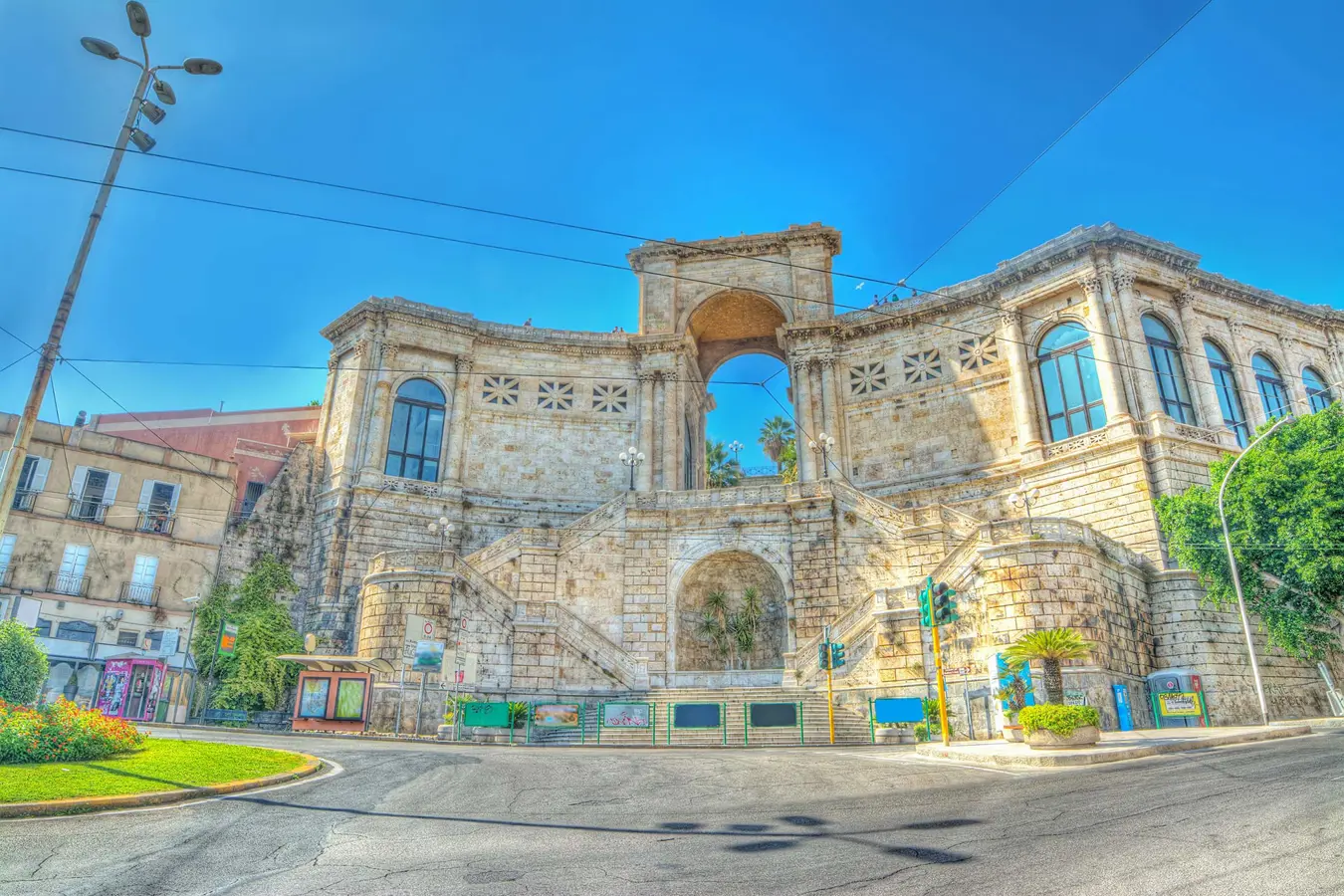
Bastione Saint Remy, Cagliari. Photo: Sisterscom.com, Shutterstock
Starting our itinerary from Piazza Costituzione and Bastione Saint Remy, in Piazza Marghinotti, we are immediately struck by the sheer size of the imposing Palazzo Valdès, which was built in the Eclectic style of the early twentieth century. This building is topped by the crest of the family who set up an important printing works here, which was operational up until only a few years ago.
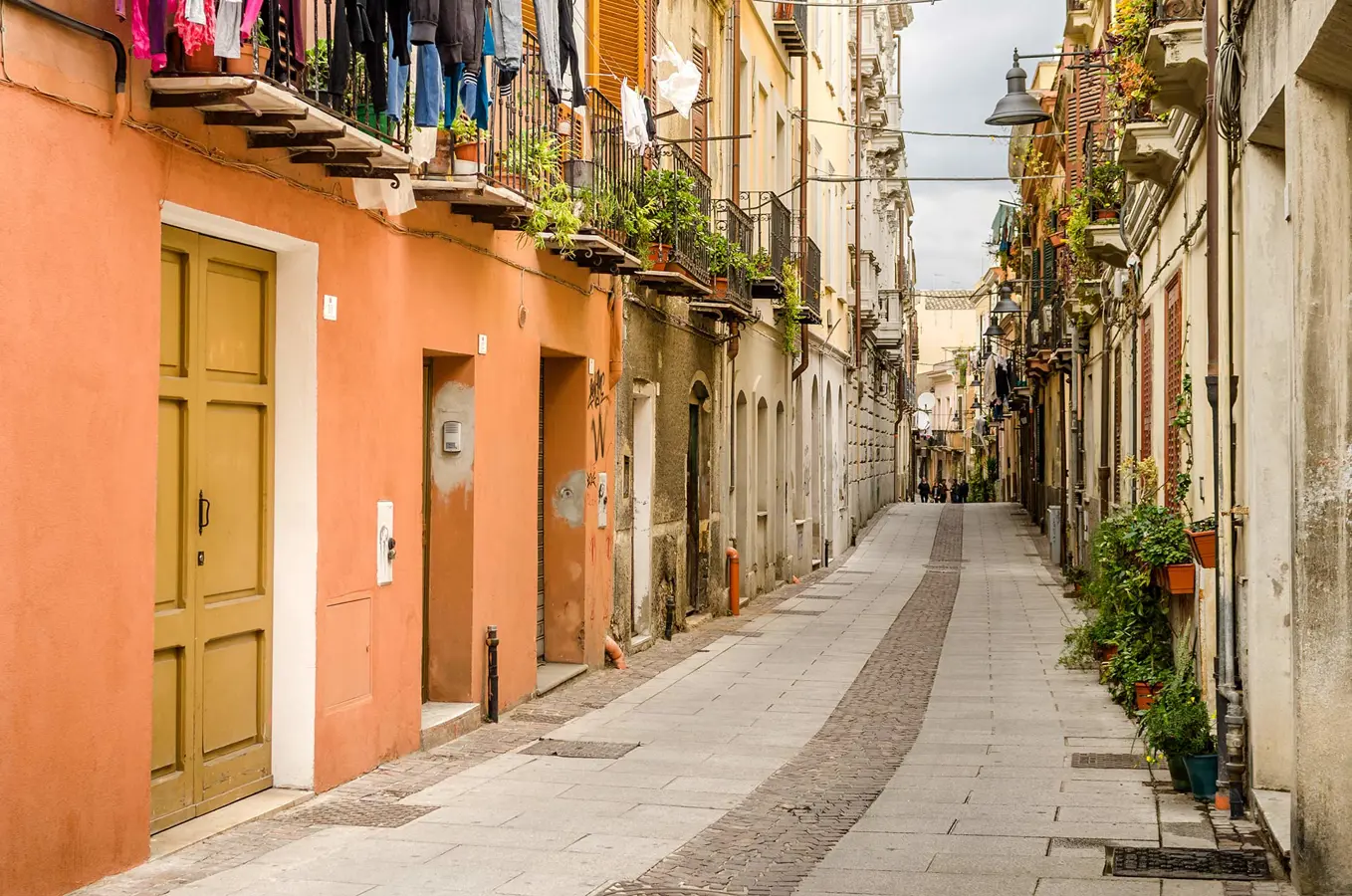
Via San Giovanni, Cagliari. Photo: Sisterscom.com, Shutterstock
Via San Giovanni begins on one side of the square. The houses in this street have narrow façades and internally overlook small courtyards or larger gardens, indicating their origins as vegetable plots that became surrounded over time by the residence. Even some of the more modest buildings, with their Art Nouveau and Deco motifs, are splendid. The alleyways that radiate from Via San Giovanni in Cagliari had interesting names until the end of the nineteenth century such as Bello (Beautiful), Vecchio (Old), Delle Scale (of the Steps), di Mezzo (in the Middle) and dell’Amiciziea (of Friendship)…, names that were later replaced by a simple number.
The churches of Cagliari
The Church dedicated to St. John is located in a widened area that opens between the houses in the first section of the street and plays a key role in the ritual of Holy week: in fact since 1679 it has been the seat of the Arciconfraternita della Vergine Santissima della Solitudine (Archconfraternity of the Most Holy Virgin Mary of Solitude), which is involved in this old tradition, an important event in the religious and social life of Cagliari and a ritual that attracts thousands of followers due to the fact that has remained unchanged over the centuries. In addition to the Church of San Giovanni, the Church of San Cesello is also located near Porta Cavana, which is dedicated to one of the children martyred in the IV century. It was built in 1702 at the request of the federation of coopers, but is today entrusted to the care of cloistered nuns of the Sacrementine order.
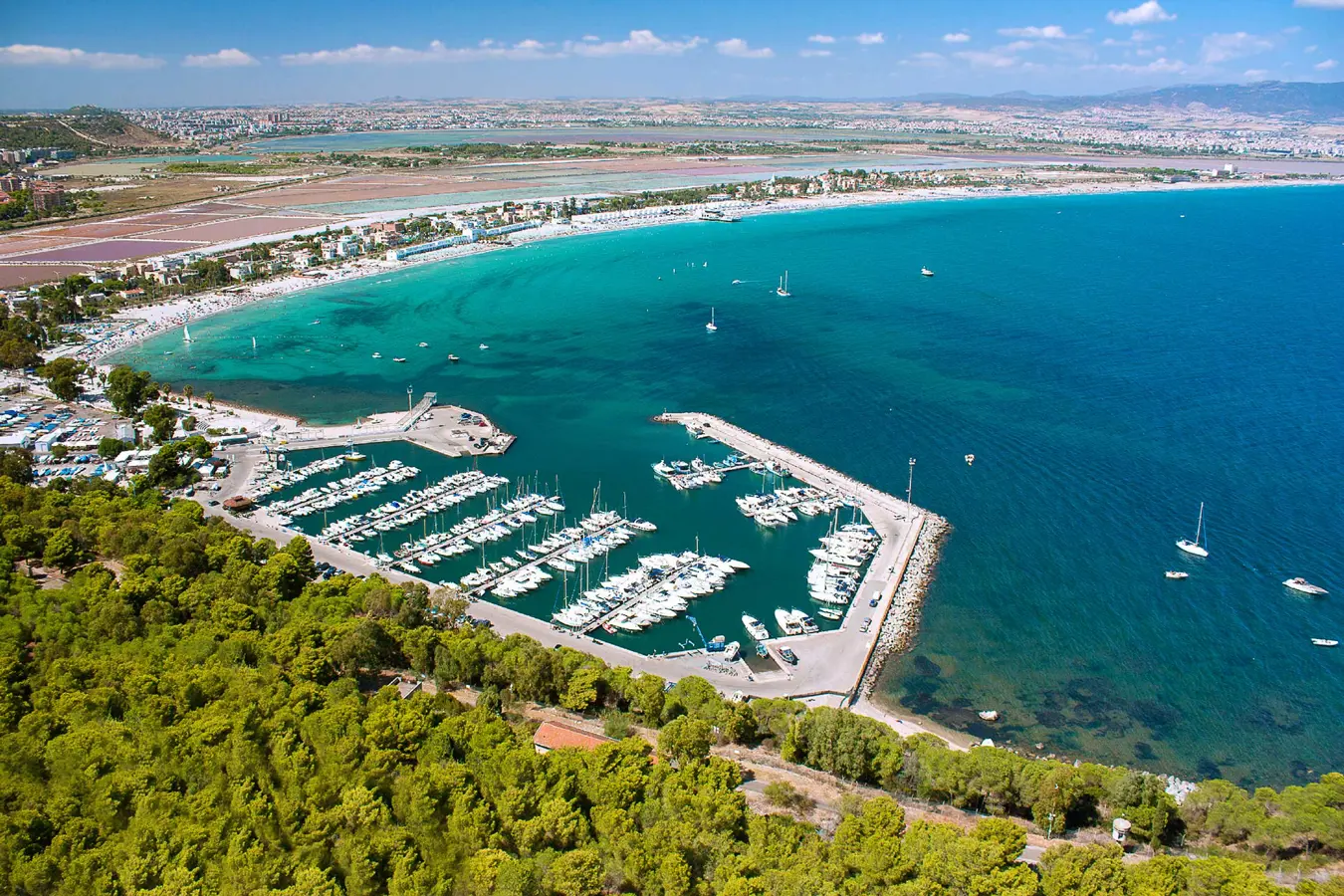
A view of Cagliari from above with the port and the famous Poetto beach. Photo: Sisterscom.com, Shutterstock
After the Church of San Cesello, we take the alleyway called Vico VII San Giovanni, then turn left towards Via San Saturnino, taking a flight of steps to Terrapieno, one of the most beautiful promenades of Cagliari, with its age-old pines and breathtaking view that extends from nearby Campidano to the sea.
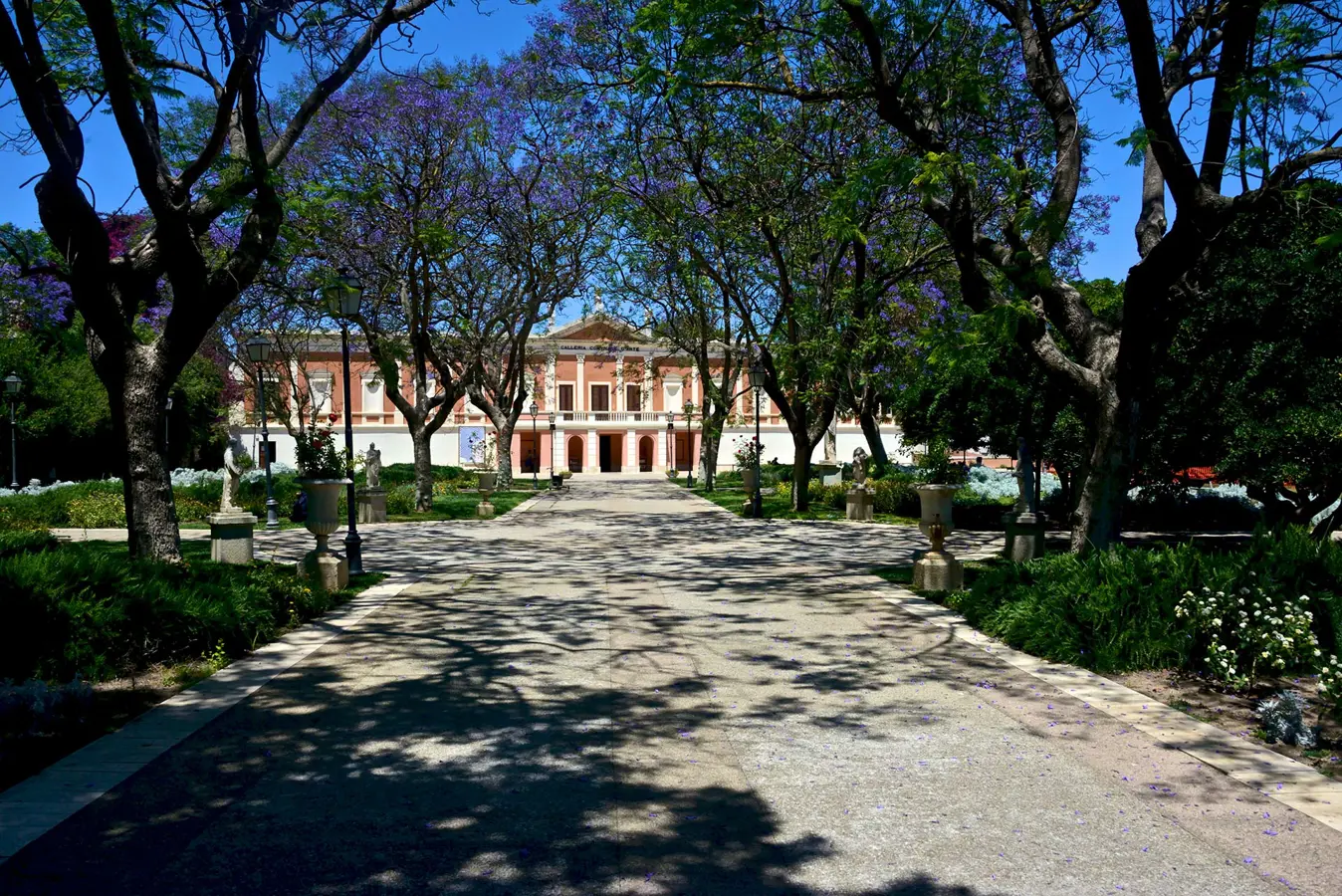
The public gardens and the municipal art gallery. Photo: Sisterscom.com, Shutterstock
The public gardens in Cagliari
At the end of Terrapieno we find the Public Gardens, whose origins date back to the first half of the nineteenth century. They are filled with valuable examples of ficus, holm oaks, palms and rare exotic plants. The Gardens, with their narrow, elongated form, lead to the Palazzina dell’ex Polveriera (Building of the former Gunpowder Magazine). Destroyed at the beginning of the nineteenth century and then rebuilt, it today houses the Galleria Comunale d’Arte (Municipal Art Gallery). The Garden is not just a place of fun for children, in summer it also holds theatre performances, cultural events and film showings.
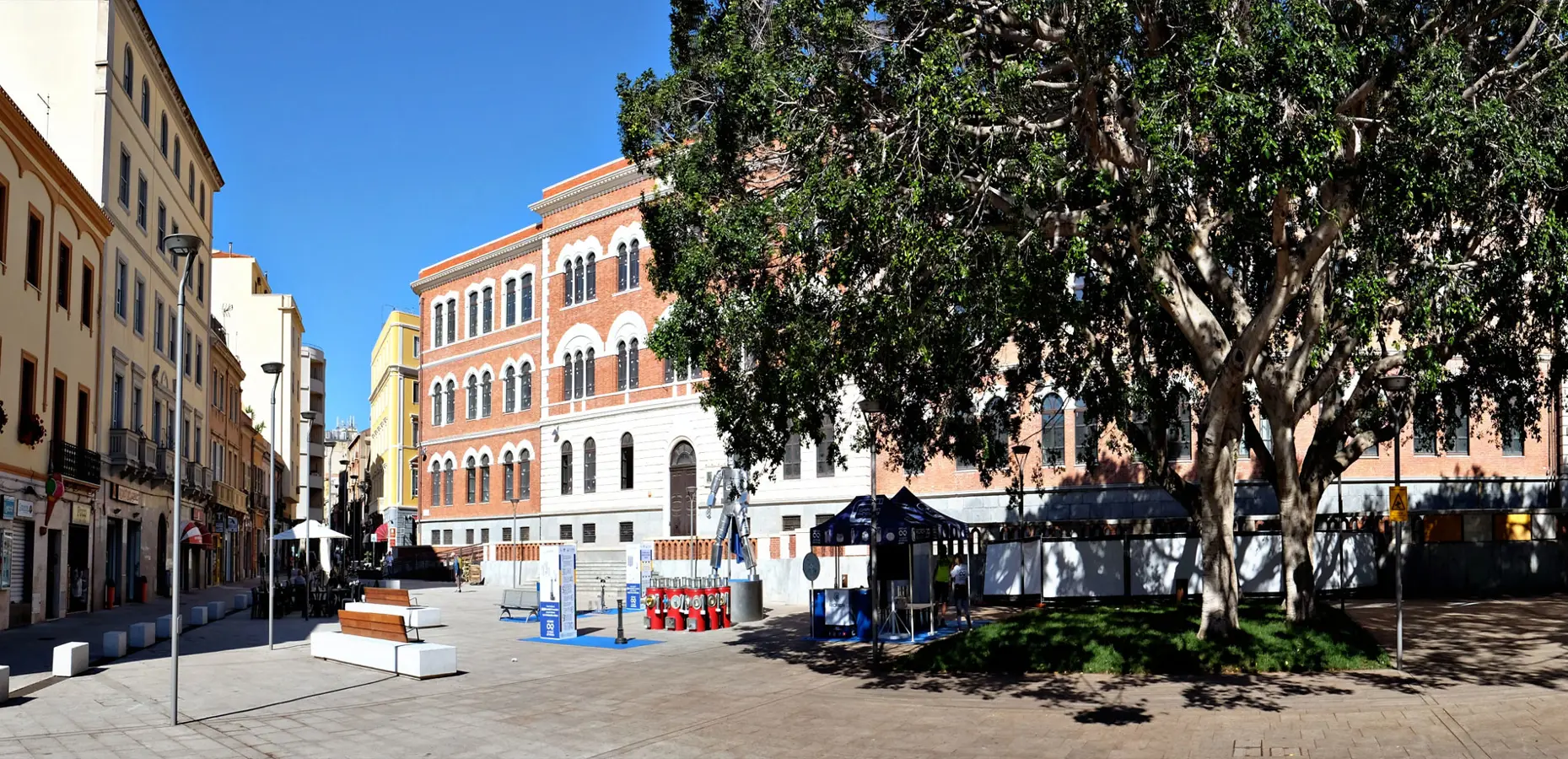
Behind the entrance to the Garden, we continue to Piazza Garibaldi, the vast and stately shopping street, which is lined with trees but above all elegant buildings that date back to the beginning of the twentieth century. Among these are Palazzo Zedda, which features an interesting façade of bands of two different colours, and the building of the elementary schools, which were named after the young officer Alberto Riva Villasanta, a hero who fell in the First World War.
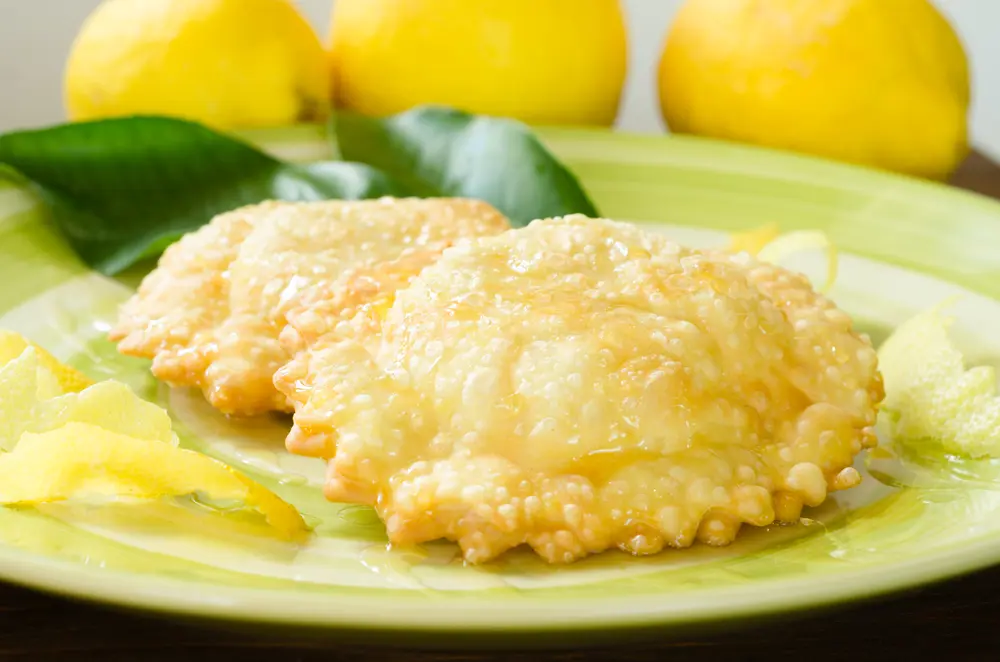
The sebadas. Photo: Sisterscom.com, Shutterstock
The tipical dishes of Cagliari
The local food alternates flavours from the sea and those from the land, including the well-known malloreddus, small pasta shapes served with meat and sausage sauce and fregola sarda (a type of pasta made of durum wheat). Don’t miss sebadas, ravioli stuffed with cheese, fried and covered in melted honey.
Text by Anna Glik
All rights reserved. Copyright © Sisterscom.com
Tourism Board
www.cagliariturismo.it
Partnership with Booking.com
Where to sleep in Cagliari
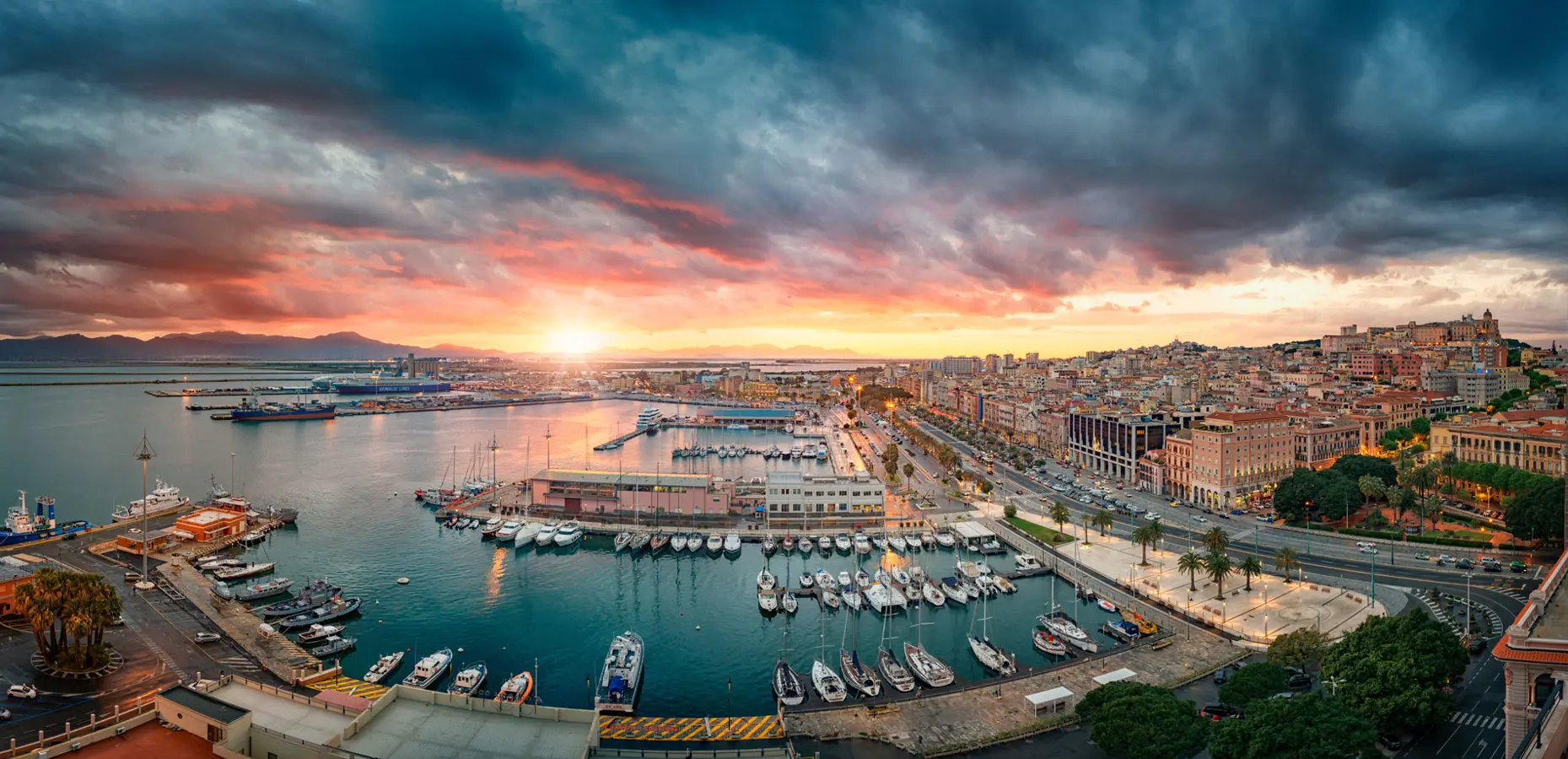
Cagliari is a welcoming city and offers different possibilities for accommodation.
To find the ideal hotel and the best offers you can do a search for the stars but also for districts or landmarks.
DISTRICTS
Hotels in the districts
LANDMARKS
Hotels in tourist area
WHERE TO GO in cagliari
Monuments of Cagliari
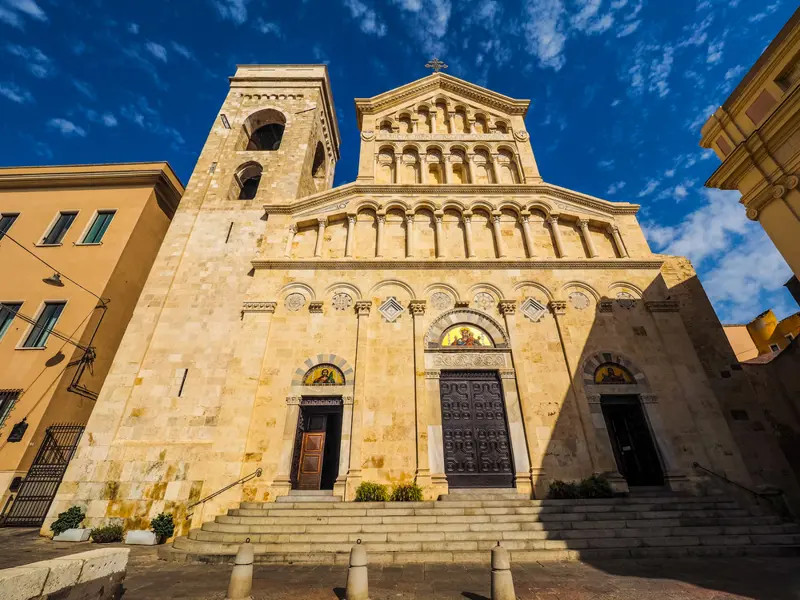
Copyright © Sisterscom.com / Shutterstock
CHATHEDRAL OF SANTA MARIA
The Cathedral of Santa Maria was built in the XIII century in Romanesque-Pisano style and underwent various changes in Gothic, Baroque and Neo-Romanesque style over the centuries. Inside the church, in addition to the Crypt-Sanctuary of the Martyrs situated on the right side inside the Aragon chapel, is a valuable relic dated 1527. The relic houses a thorn supposedly belonging to the crown of Jesus.
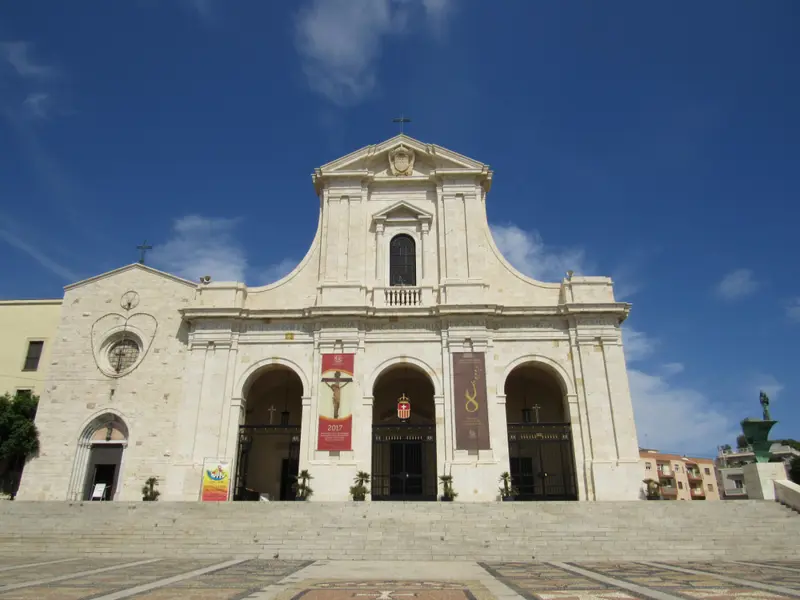
Copyright © Sisterscom.com / Shutterstock
SANCUARY OF OUR LADY OF BONARIA
This religious complex consists of a small thirteenth-century Gothic-Catalan church and a Neo-classical basilica dating back to the eighteenth century. The Sanctuary of Our Lady of Bonaria houses the wooden simulacrum of the “Madonna with Baby in arms” which since 1370 is found on the hill of Bonaria. The feast of Our Lady of Bonaria is celebrated on 24 April.
BASILICA OF SANTA CROCE
The Basilica of Santa Croce was formerly a synagogue built on an area that was once the Jewish ghetto. Around 1500, following the expulsion of Jews from Cagliari, the building was converted into a Catholic church. The interior of the church has a single nave with three chapels on each side, which are adorned with Baroque style altars that preserve works of art dating back to the XVII and XVIII century.
SCALA DI FERRO (FORMER BASTION OF MONSERRATO)
This late nineteenth-century Neo-Gothic building was built on an old defensive fortress with pentagonal layout dating back to the XVI century. The Bastion of Monserrato ("Scala di Ferro") was built in 1562 according to the plan of the engineer Rocco Cappellino to protect the eastern side of the shore. After further refurbishment, the building now houses the offices of the prefecture.
Museums in Cagliari
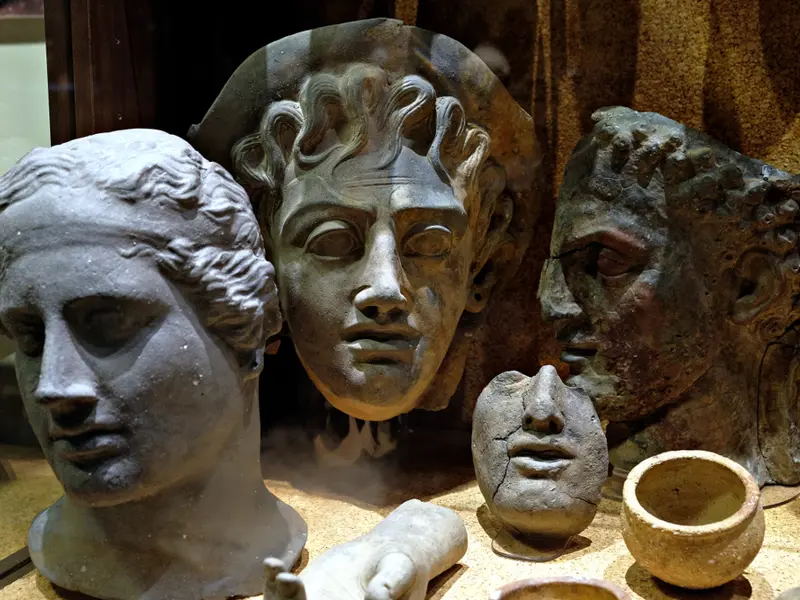
Copyright © Sisterscom.com / Shutterstock
NATIONAL ARCHAEOLOGICAL MUSEUM
The National Archaeological Museum houses a rich heritage of objects and artefacts that reflect the different cultures of the island from the Pre-Nuragic age until the late Middle Ages. The building, designed by the architects Piero Gazzola and Libero Cecchini, was inaugurated in 1979 and is arranged over four floors dedicated to the ancient cultures of the Sardinia. Some of the most representative items include typical local ceramics and exquisitely crafted objects.
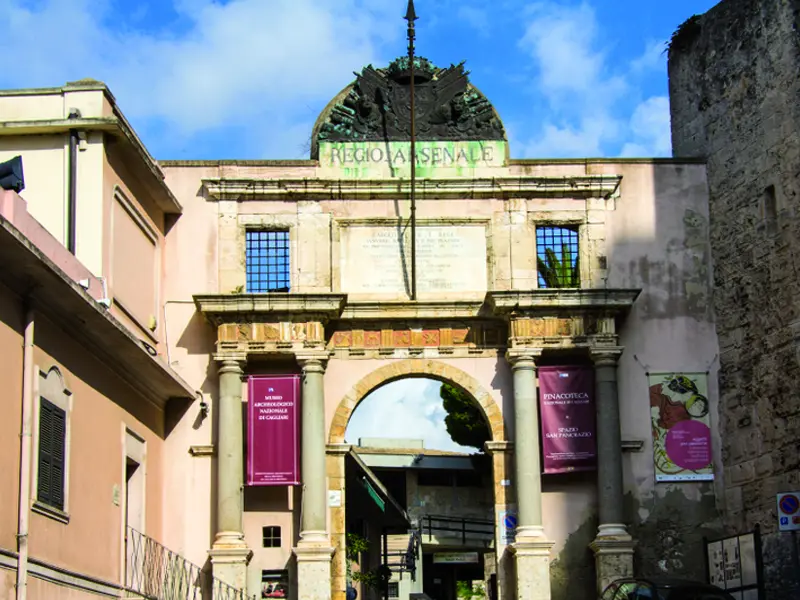
Copyright © Sisterscom.com / Shutterstock
NATIONAL ART GALLERY
The National Art Gallery features not only a small amount of contemporary art and sculpture, but also canvases, coats of arms, religious furniture and paintings. The Art Gallery is situated inside the museum complex of the Cittadella dei Musei (Citadel of Museums) and was built on the pre-existing structure of the Royal Arsenal. Since 1919, it has owned an extraordinary aquamanile in the form of a bird, made in the XII century by a Byzantine artist.
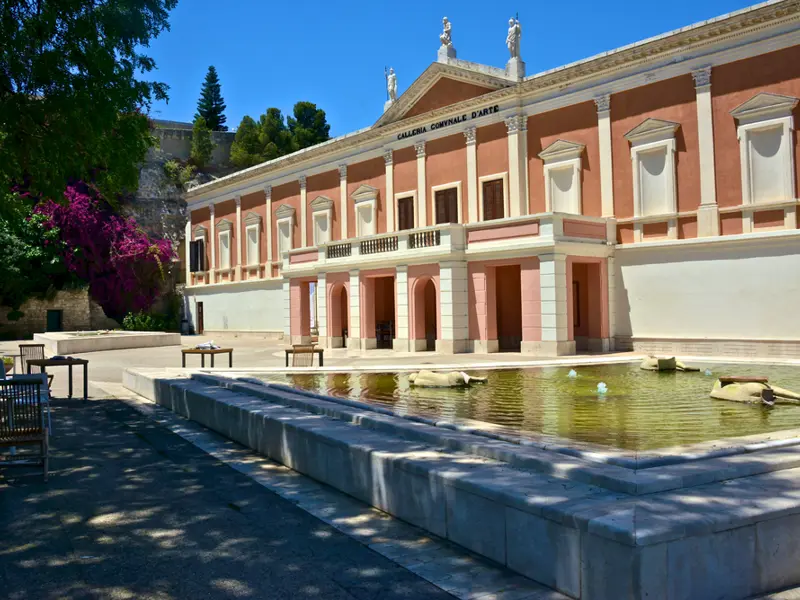
Copyright © Sisterscom.com / Shutterstock
MUNICIPAL ART GALLERY
The Municipal Art Gallery is situated in a Neo-classical building inside the Public Gardens and houses the Ingrao Art Collection, the Sardinian Collection of the twentieth century and a specialist Art History library. The Gallery was opened in 1933 to house the numerous, valuable works by Italian and Sardinian artists purchased by the Municipal Authority of Cagliari, thanks also to the generous donations of art enthusiasts and benefactors.
Excursions and tours in Cagliari
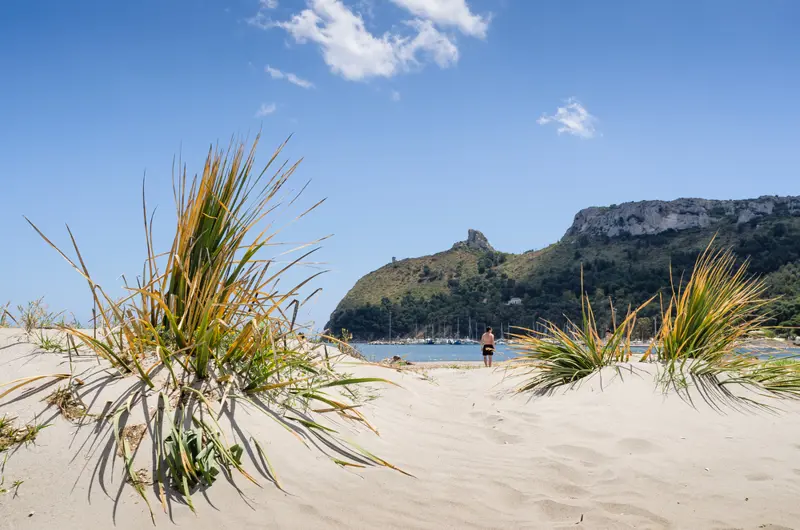
Copyright © Sisterscom.com / Shutterstock
POETTO BEACH
The beach, the “Spiaggia del Poetto” is located on the central-southern coast of Sardinia. It is still considered one of the most beautiful beaches of the island and is the preferred destination of every person from Cagliari and many others. The Spiaggia del Poetto overlooks the Golfo degli Angeli, in the central-southern coast of Sardinia and has a considerable charm.
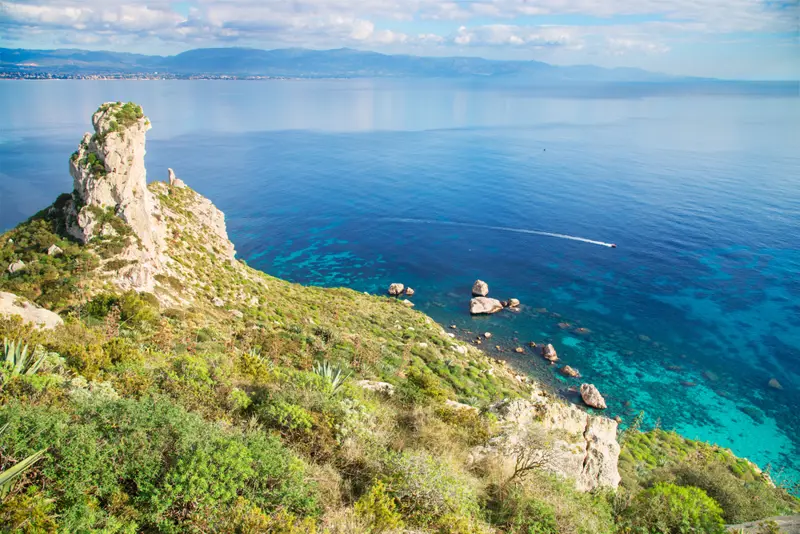
Copyright © Sisterscom.com / Shutterstock
DEVIL'S SADDLE
Access from Cala Mosca-Viale Calamosca. The Sella del Diavolo is one of the most significant areas of Cagliari and, like the promontory of S. Elia, is made of sedimentary rock of the Miocene age. The name derives from a legend, according to which the devil, charmed by the beauty of the Gulf of Cagliari, tried to gain possession of the area. During a battle the devil fell on the promontory, giving it its current form.
Partnership with GetYourGuide
Recommended tours in Cagliari
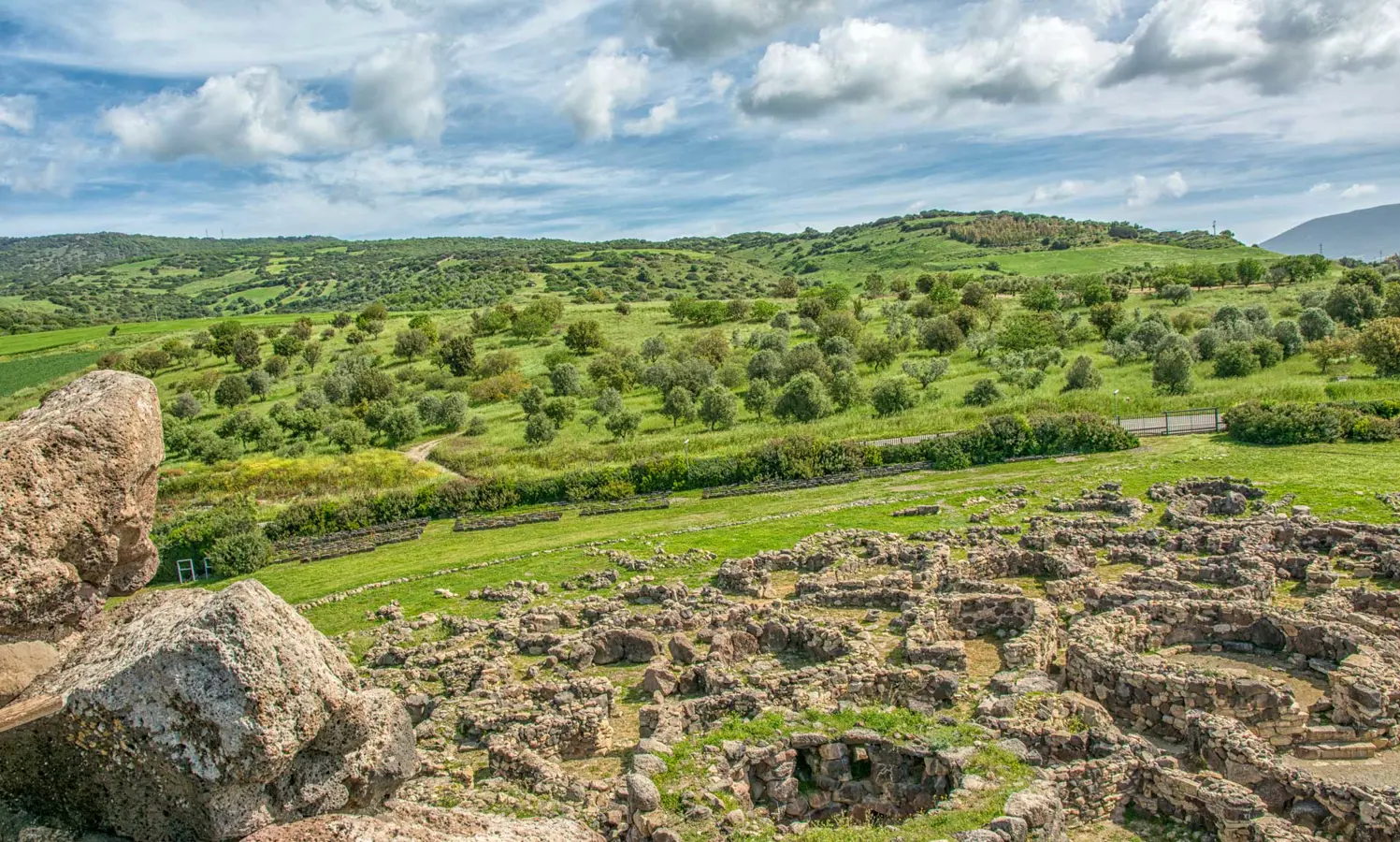 Su Nuraxi in Barumini, Sardinia. Copyright © Sisterscom.com / Shutterstock
Su Nuraxi in Barumini, Sardinia. Copyright © Sisterscom.com / ShutterstockSU NURAXI IN BARUMINI
Nuragic village of Su Nuraxi, one of the most important architectural works in Sardinia and UNESCO World Heritage Site. The archaeological area of the Nuragic complex of Barumini includes the Nuragic architecture and parts of a Nuragic village. The Polo Museum of Casa Zapata offers an archaeological and ethnographic collection on the life of the first Sardinian civilizations and the technologies of protohistoric populations. Su Nuraxi is located about 50 km from Cagliari. Guided tour of Su Nuraxi in Barumini.
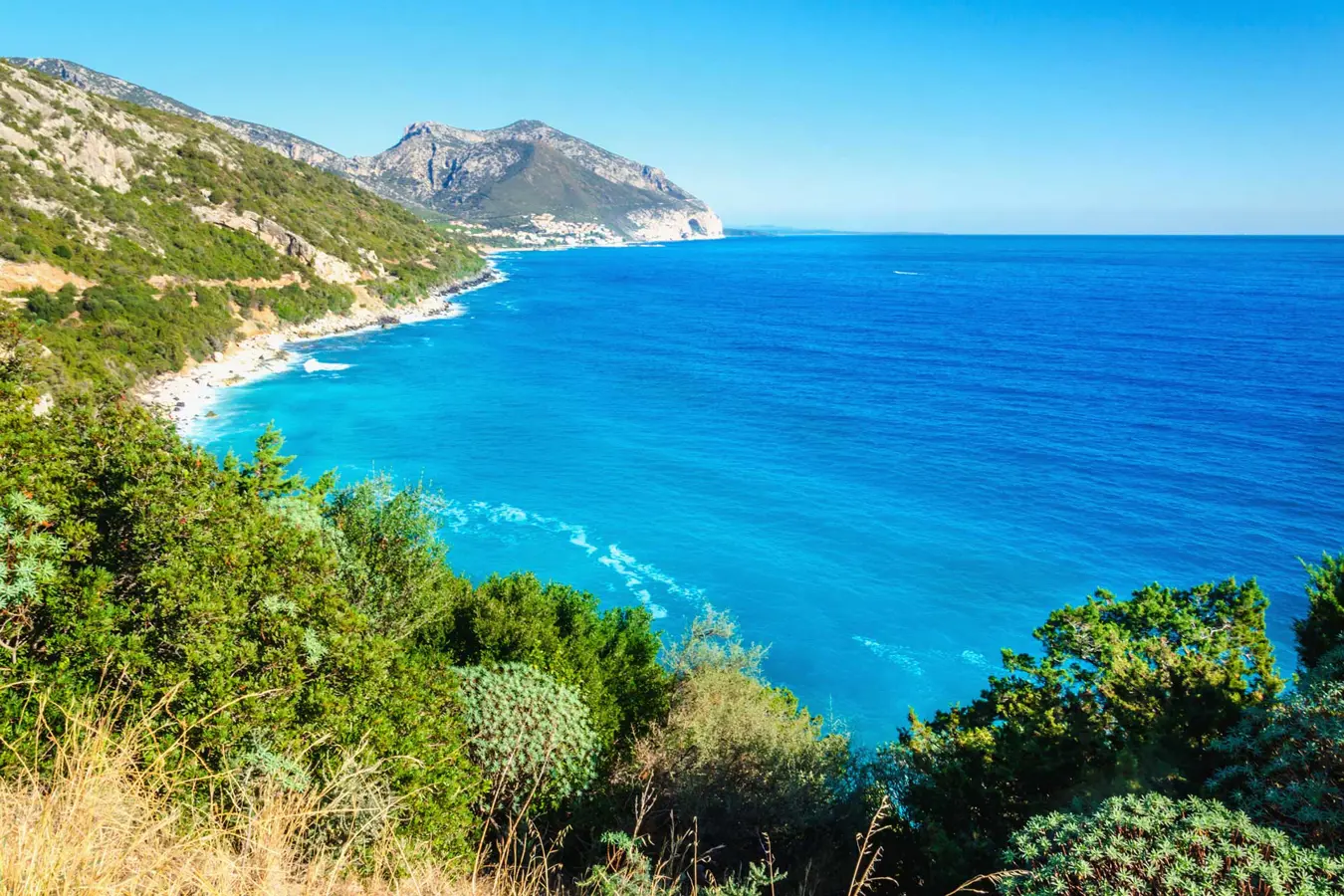
Gulf of Orosei, Sardinia. Copyright © Sisterscom.com / Shutterstock
GULF OF OROSEI
Departure from Cagliari for a cruise to the Gulf of Orosei on the north-eastern coast of Sardinia. Boarding for a mini-cruise admiring the sea and sunbathing in bays and dream beaches: Cala Mariolu, Cala Luna and Cala Beriala. In addition, sighting of birds in their natural habitat and optional visit to the Bue Marino Caves. Cruise to the Gulf of Orosei from Cagliari.
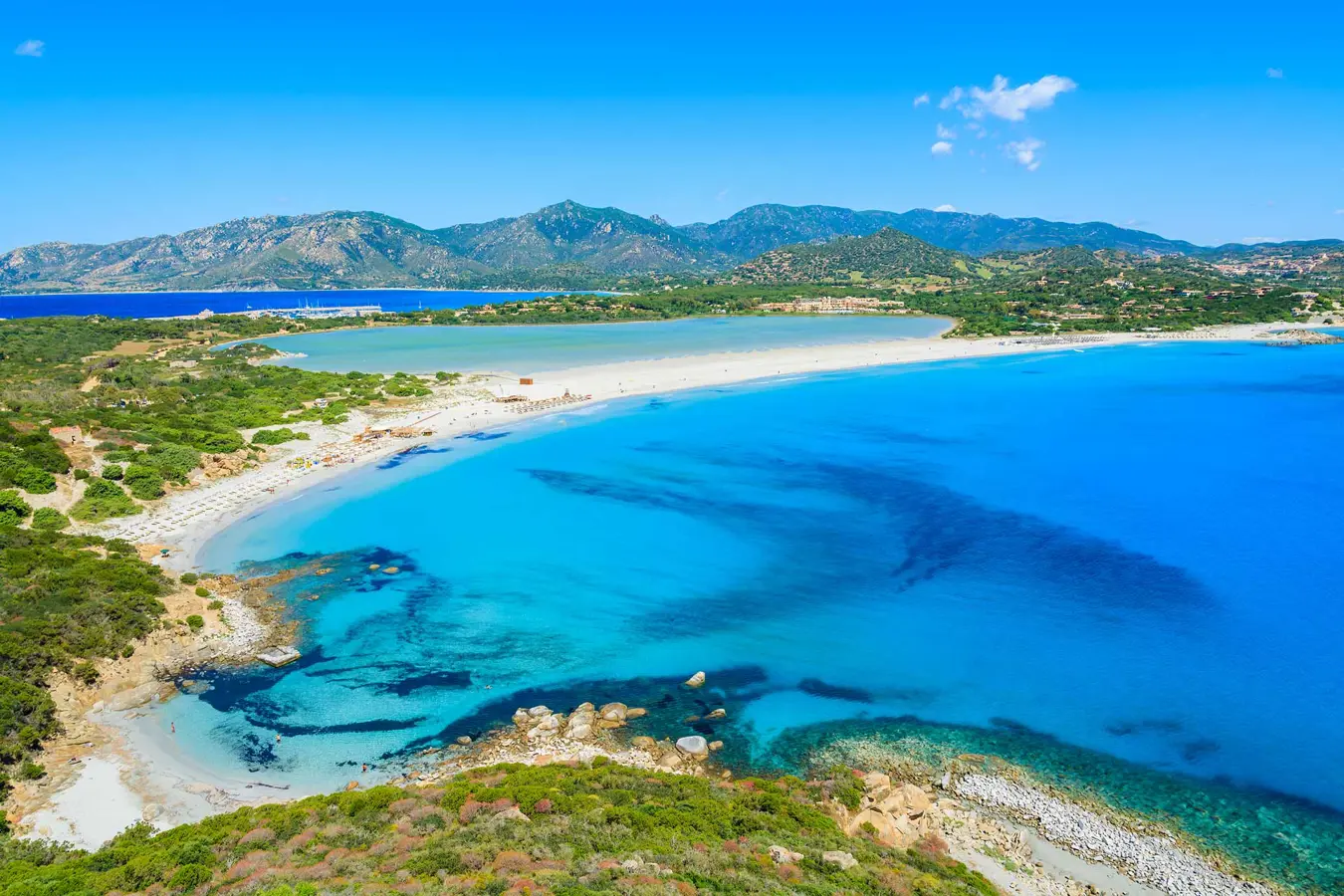
Villasimius, Sardinia. Copyright © Sisterscom.com / Shutterstock
VILLASIMIUS
An excursion that starts from the port of Cagliari and passes along the Molentargius pond with pink flamingos and the Sella del Diavolo, a rock formation overlooking the Poetto beach. Stop at Campulongu beach to swim or snorkel in the protected marine area while at the famous Porto Giunco beach you can walk on the white sand and admire the granite rocks. Day tour from Cagliari to the beaches of Villasimius with transport by car and private guide.
Discover all tours
News & Useful info
Shopping
Luxury
You might be interested in
Other destinations
Airports nearby Cagliari











